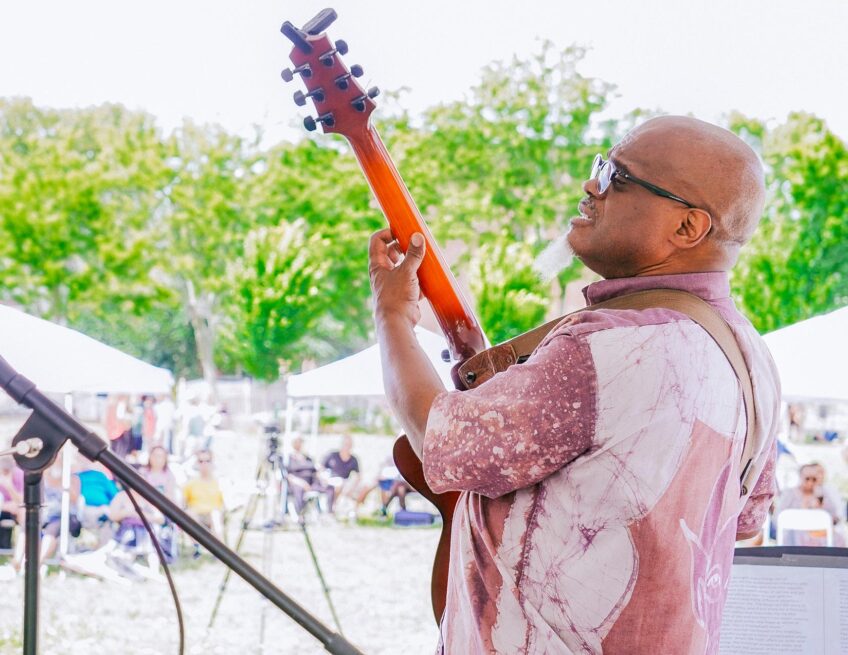
“Invisible Disabilities,” running virtually at Unbound Visual Arts through Dec. 27, explores the work of artists who live with disabilities that aren’t apparent to the naked eye. Their works probe the challenges, loneliness and hopeful moments while living with diagnoses like ADHD, chronic illness, autism spectrum disorder and other mental health conditions.

Amaranthia Sepia, “Hidden Demons of Anxiety – Mask 2 Distraught,” Ink pen, digital coloring. IMAGE: COURTESY OF UNBOUND VISUAL ARTS
“When people are not familiar with these disabilities, it lowers the probability that they will be represented in artworks, galleries and museums,” says curator Samantha M. Joyce. “With this exhibition, it is my hope to shed some light and educate the general public about these invisible disabilities and how they can be properly represented.”
Artist Amaranthia Sepia’s work is based in a comic book tradition and often follows the character “Emo Bunny.” The pieces explore her experience with generalized anxiety disorder (GAD) and post-traumatic stress disorder (PTSD). “Hidden Demons of Anxiety- Mask 2 Distraught” shows a demon mask over a seemingly human head. The figure is crouched with its hands up in despair, and though the mask could potentially be frightening, the expression is one of frustration, sadness and fear.
Sepia lived in Japan in a Buddhist community for several years as a child. Coming back to the New England, particularly predominantly-white New Hampshire, was a challenge.
“As I slowly became aware of my invisible illnesses — low cortisol, racial trauma, generalized anxiety disorder, PTSD and agoraphobia, my experiences with trauma and racism slowly seeped into my work,” says Sepia. “I incorporated my childhood fascination with Japanese demons and monsters into these projects as a way to express how terrifying and isolating it is to live with GAD and trauma.”
Maia Monteagudo has a Master of Arts from Lesley University in mental health counseling with a concentration in expressive arts therapies and works as a therapist. She utilizes her artistic craft personally to explore her dual heritage and professionally to develop her therapeutic practice. “Being raised the child of two worlds — Guatemala and the United States — language and expression quickly became ever-present in my identity formation and the art-making process,” says Monteagudo.
Incorporating myths and visual traditions from Mayan culture, abstraction and intricate anatomical drawings, Monteagudo creates probing, detailed works with ink pen, acrylic and multimedia tools.
Many famous names in art history lived with mental illness, but it’s frequently cited as a biography note rather than a driving force for their artistic creation. Here, invisible illnesses, physical and mental, are explored as the impetus for artistic creation.







